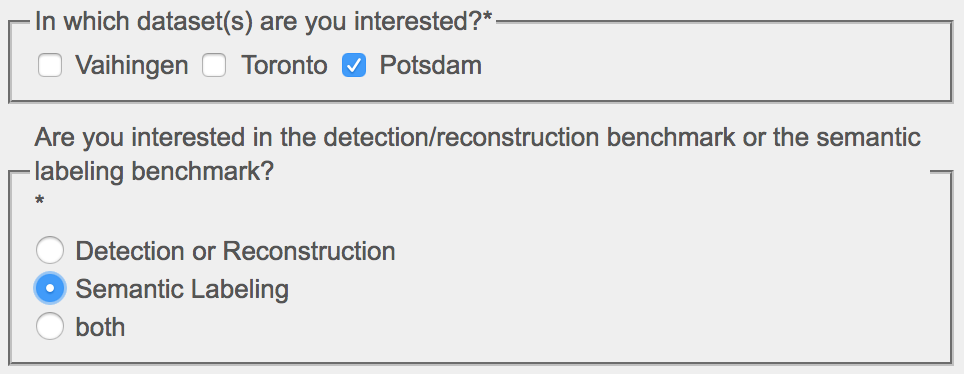Segmenting satellite images
In this section, we will use a dataset provided by the International Society for Photogrammetry and Remote Sensing (ISPRS). The dataset contains satellite images of Potsdam, Germany with 5 cm resolution. These images come with an additional data of infrared and height contours of the images. There are six labels associated with the images, which are:
- Building
- Vegetation
- Trees
- Cabs
- Clutter
- Impervious
A total of 38 images are provided with 6,000 x 6,000 patches. Please go to the page, http://www2.isprs.org/commissions/comm3/wg4/data-request-form2.html and fill in the form. After that, select the following options on the form:

Post the form, an email will be sent to you, from which the data can be downloaded.
Modeling FCN for segmentation
Import the libraries and get the shape of the input. The number of labels is defined as 6:
from .resnet50 import ResNet50 nb_labels = 6 img_height, img_width, _ = input_shape input_tensor = tf.keras.layers.Input(shape=input_shape) weights...







































































